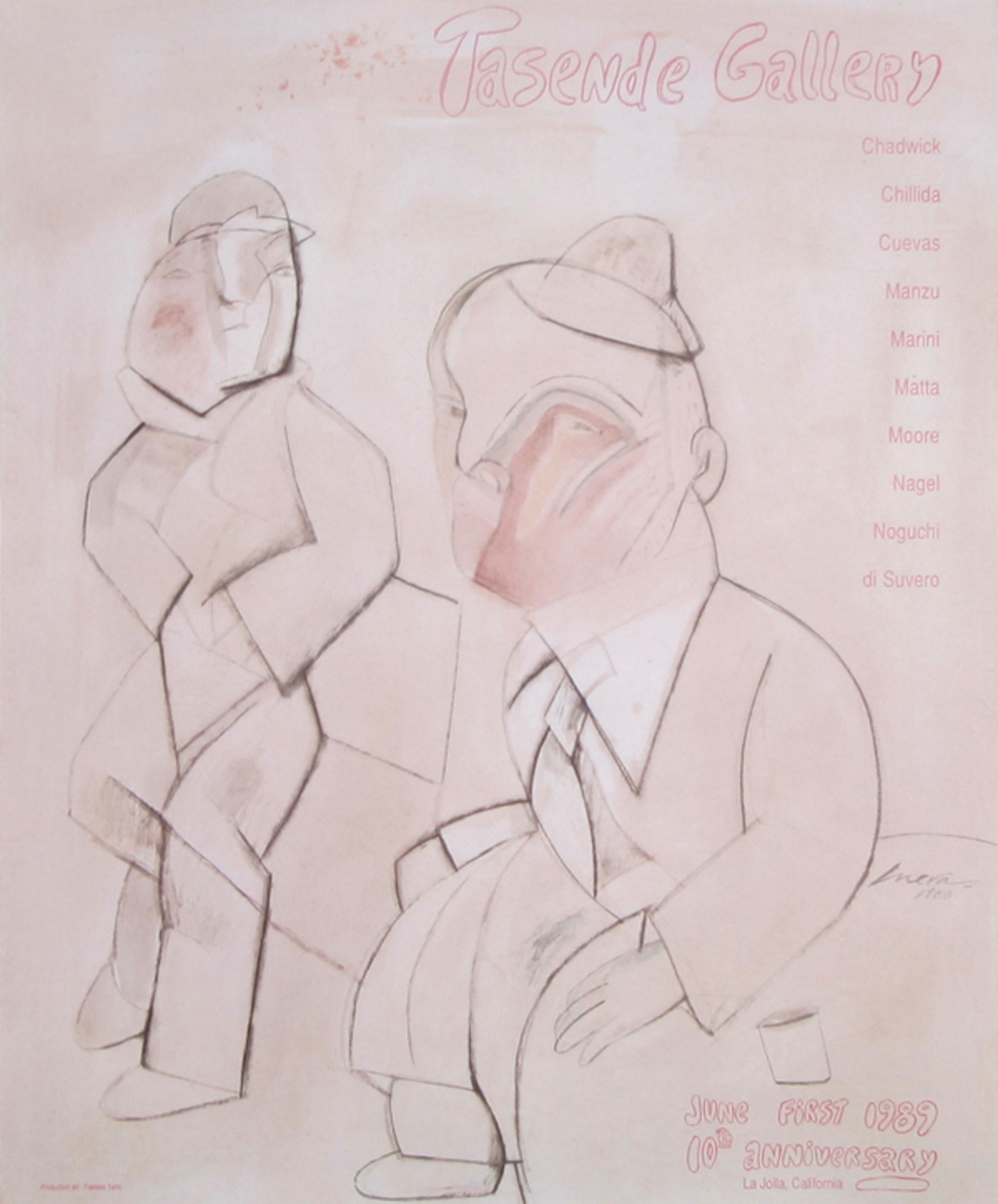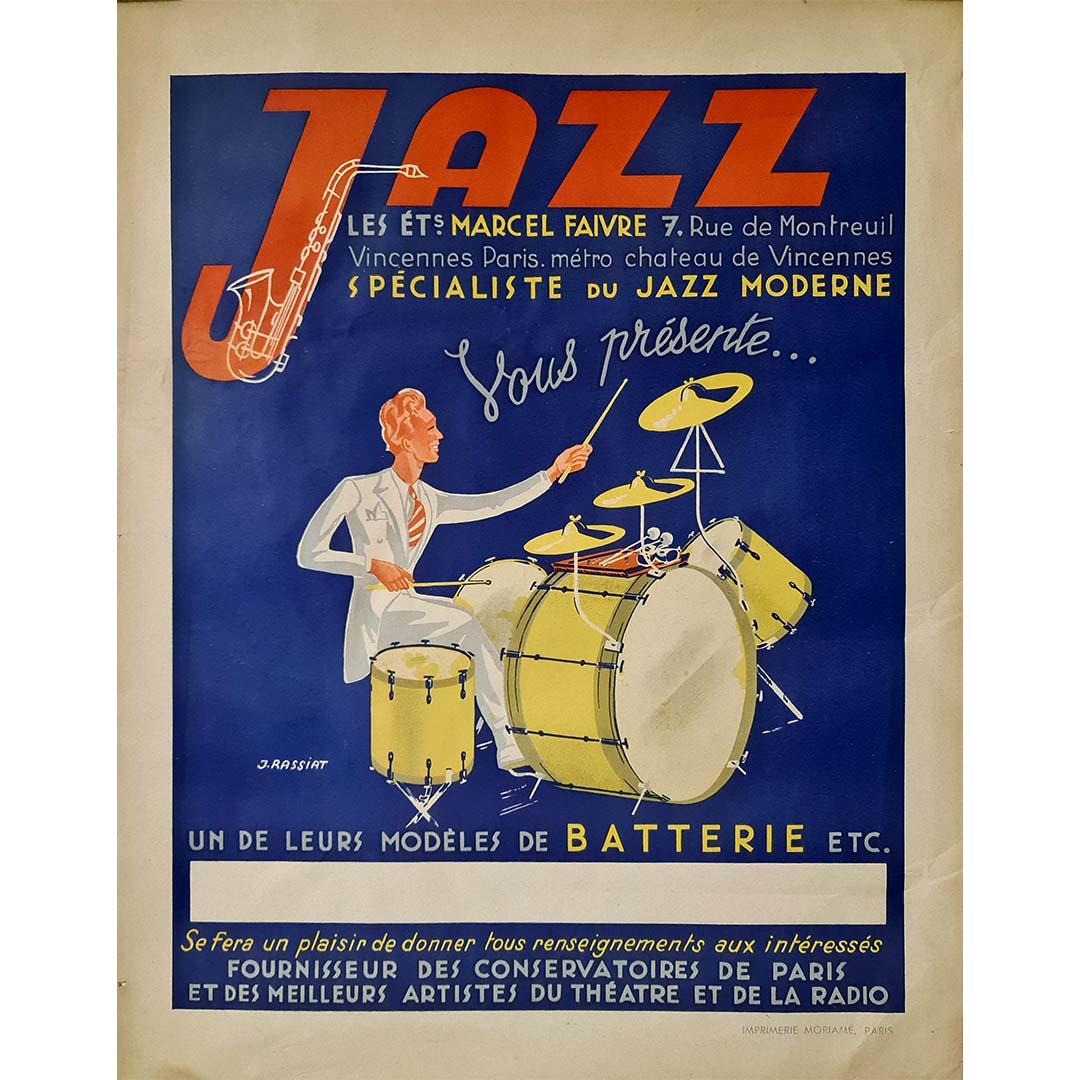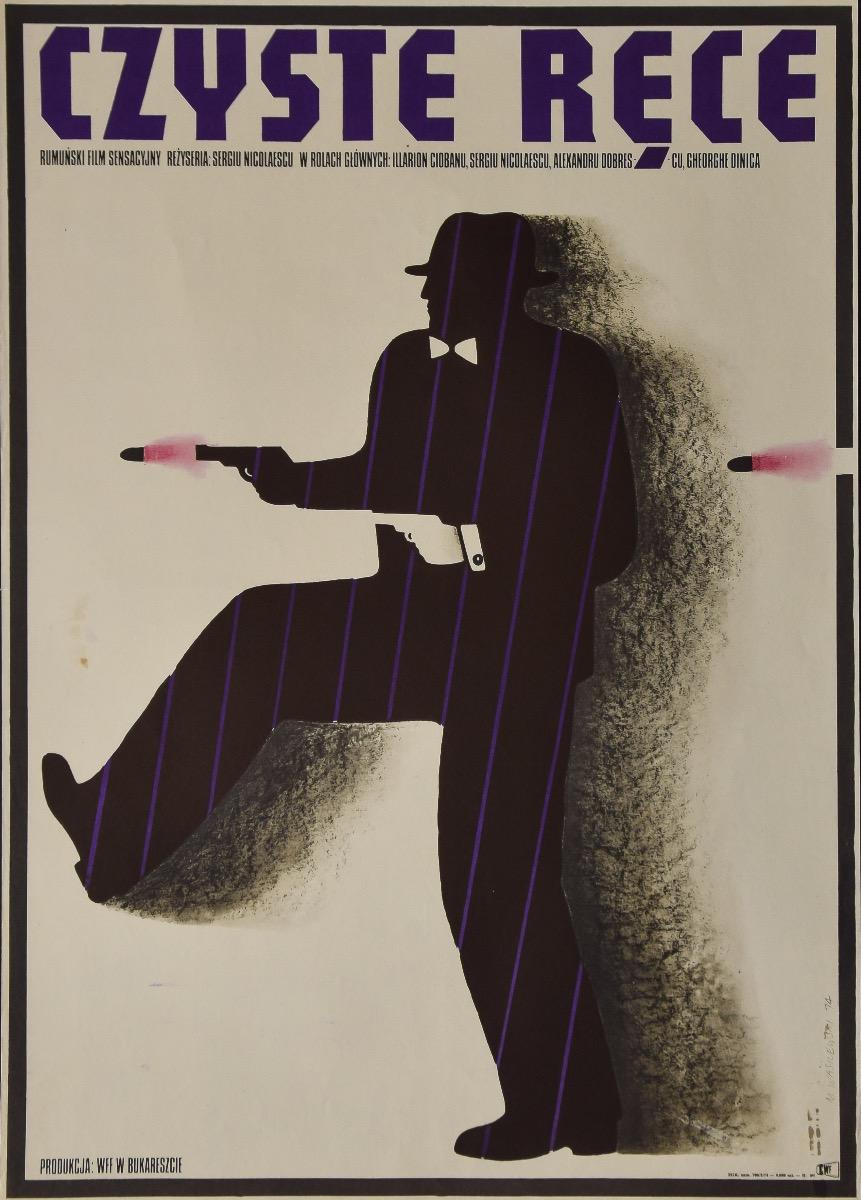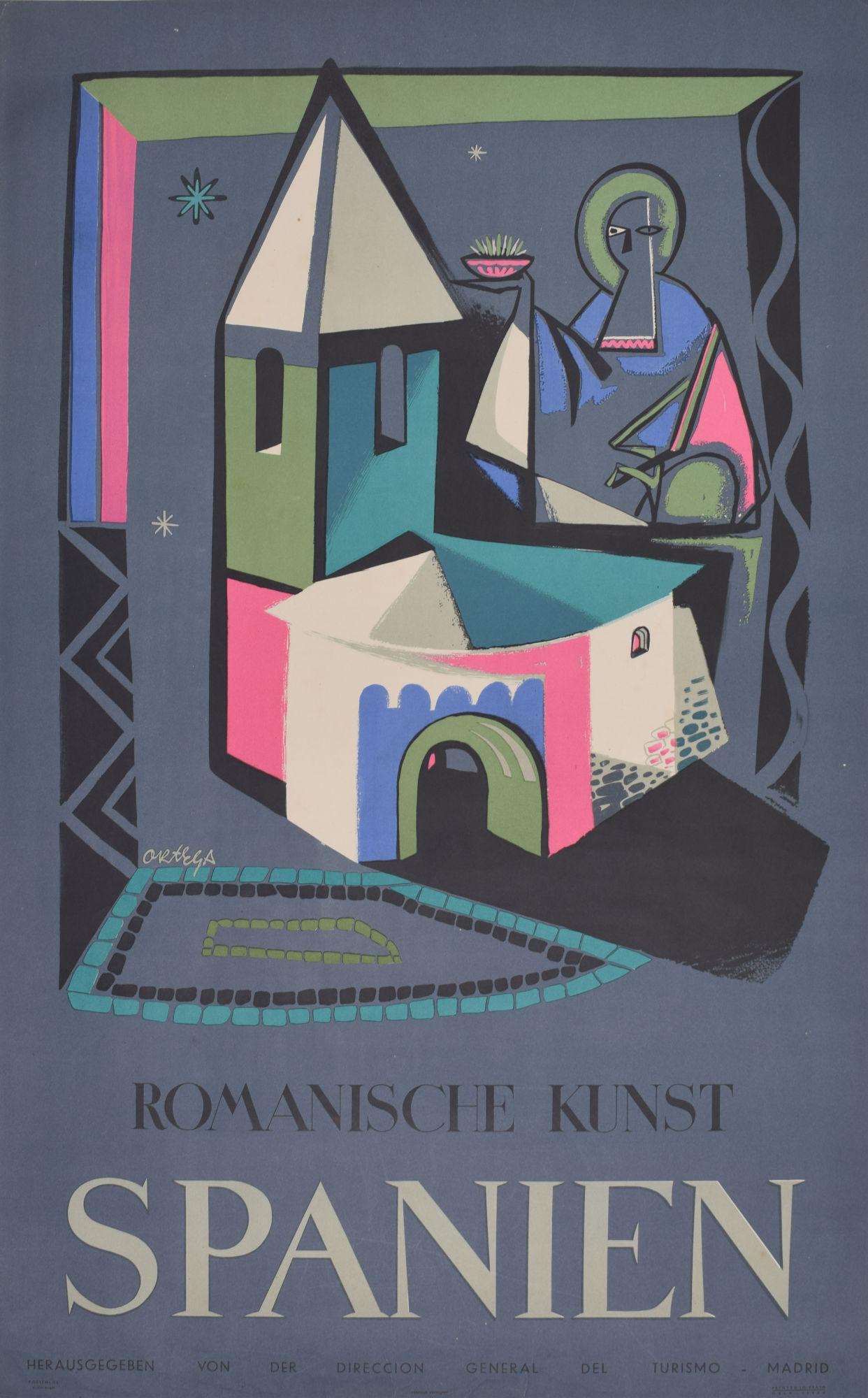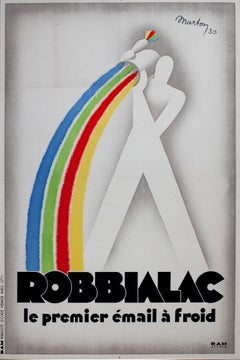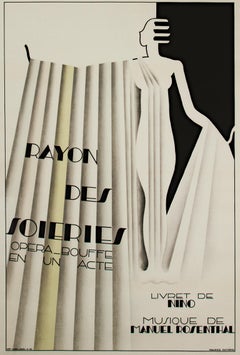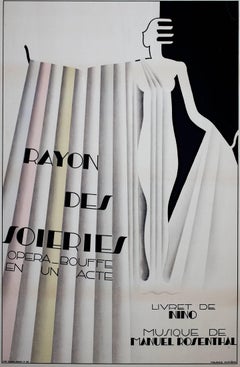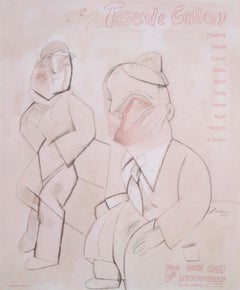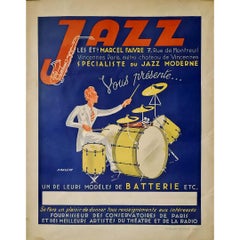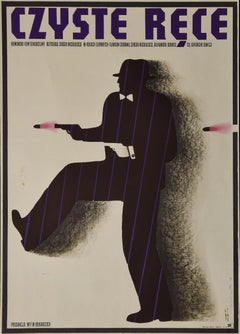Items Similar to "Ray Ventura, " Original Lithograph Poster by Jean Dominique Van Caulaert
Want more images or videos?
Request additional images or videos from the seller
1 of 7
Jean Dominique van Caulaert"Ray Ventura, " Original Lithograph Poster by Jean Dominique Van Caulaert1930
1930
$10,500
£7,968.67
€9,178.75
CA$15,004.59
A$16,467.40
CHF 8,492.70
MX$196,714.93
NOK 107,618.25
SEK 100,843.30
DKK 68,547.98
About the Item
"Ray Ventura" is an original lithograph poster by Jean Dominique van Caulaert. It features a portrait of Ray Ventura, a French jazz bandleader who played a significant role in popularizing jazz in France in the 1930s. He is surrounded by cartoon representations of a jazz band.
57 1/2" x 45 1/4"
Jean Dominique van Caulaert was a favorite painter of the French art deco period. Starting in 1933, he began painting personalities and show business stars of Paris including Edith Piaf, Tino Rossi, Mistinguett, Rena Kaetty and Nita Rahia. Van Caulert's poster career began in the late 1930s. He dedicated himself to the stars of the Music Halls, working only for the biggest names: Marie Dubas, Lyse Gauty, Mistinguett, etc. He primarily employed chalk and pastels to create his realistic portraits.
Caulaert was a French painter, poster artist, illustrator and designer. He created his first poster in Belgium 1916. In 1923 and 1924, he illustrated covers of sheet music for a Belgian editor. Magritte and other painters, also, worked in this publisher's musical office. In the 1930s, he executed numerous posters for Mistinguett, Marie Dubas, Josephine Baker, Cecile Sorel, Suzy Solidor, Lys Gauty and Tino Rossi. A portrayer of talent, he painted all of Paris until the 1950s. He left for the USA in 1951 and worked 8 months a year in New York and 4 in Paris until his death at the Villa des Arts in Montmartre. He was made a Knight of the Legion of Honor.
- Creator:Jean Dominique van Caulaert (1877-1979, French)
- Creation Year:1930
- Dimensions:Height: 57.5 in (146.05 cm)Width: 45.25 in (114.94 cm)
- Medium:
- Period:
- Condition:
- Gallery Location:Milwaukee, WI
- Reference Number:Seller: 10059g1stDibs: LU60532932841
About the Seller
4.9
Gold Seller
Premium sellers maintaining a 4.3+ rating and 24-hour response times
Established in 1966
1stDibs seller since 2017
451 sales on 1stDibs
Typical response time: 2 hours
- ShippingRetrieving quote...Shipping from: Milwaukee, WI
- Return Policy
Authenticity Guarantee
In the unlikely event there’s an issue with an item’s authenticity, contact us within 1 year for a full refund. DetailsMoney-Back Guarantee
If your item is not as described, is damaged in transit, or does not arrive, contact us within 7 days for a full refund. Details24-Hour Cancellation
You have a 24-hour grace period in which to reconsider your purchase, with no questions asked.Vetted Professional Sellers
Our world-class sellers must adhere to strict standards for service and quality, maintaining the integrity of our listings.Price-Match Guarantee
If you find that a seller listed the same item for a lower price elsewhere, we’ll match it.Trusted Global Delivery
Our best-in-class carrier network provides specialized shipping options worldwide, including custom delivery.More From This Seller
View All"Robbialac, " Original Lithograph Poster by Lajos Marton
By Lajos Marton
Located in Milwaukee, WI
"Robbialac" is an original lithograph poster by Lajos Marton. This poster features an abstracted man pouring out brightly-colored enamel pa...
Category
1930s Modern Figurative Prints
Materials
Lithograph
"Rayon des Soieries, Opera Bouffe en un Acte, " Litho Poster by Maurice Dufrene
By Maurice Dufrêne
Located in Milwaukee, WI
"Rayon des Soieries, Opera Bouffe en un Acte" is an original color lithograph poster by Maurice Dufrene. The artist's name is written lower right. This piece depicts an Art Deco repr...
Category
1930s Art Deco Figurative Prints
Materials
Lithograph
"Sixieme Biennale de Peinture, " Vintage Lithographic Poster
By Pablo Picasso
Located in Milwaukee, WI
"Sixieme Biennale de Peinture" is an vintage Picasso exhibition poster printed in 1966 by Mourlot. It depicts a Picasso painting from 1965 and advertises a Biennial exhibition of pai...
Category
1960s Cubist Figurative Prints
Materials
Lithograph
"Rayon des Soieries, Opera Bouffe en un Acte, " Original Lithograph by M. Dufrêne
By Maurice Dufrêne
Located in Milwaukee, WI
"Rayon des Soieries, Opera Bouffe en un Acte" is an original color lithograph poster by Maurice Dufrene. It advertises an opera called "Rays of Silk" and depicts a woman with a long ...
Category
1930s Art Deco Figurative Prints
Materials
Lithograph
"Ponctua (Clock), " Advertisement Vintage Poster signed by Rene Prejelan
By Rene Prejelan
Located in Milwaukee, WI
Original color lithograph poster by Rene Prejelan.
Ponctua (The best and least expensive precision watch), 1910.
A fine watch at a fine price- and the...
Category
1910s More Prints
Materials
Lithograph
"Que Alivio, " Silkscreen on Board signed by Ignacio Iturria
By Ignacio Iturria
Located in Milwaukee, WI
"Que Alivio" is an original silkscreen by Ignacio Iturria. The artist signed the piece in the lower right and wrote the edition number (25/59) in the lower left. This piece depicts a...
Category
1990s Interior Prints
Materials
Board, Screen
You May Also Like
Tasende Gallery, Surrealist Poster by José Luis Cuevas
By José Luis Cuevas
Located in Long Island City, NY
José Luis Cuevas, Mexican (1934 - 2017) - Tasende Gallery, Year: 1989, Medium: Poster, Size: 23 in. x 19 in. (58.42 cm x 48.26 cm)
Category
1980s Surrealist Figurative Prints
Materials
Offset
Circa 1945 original poster by James Rassiat - Marcel Faivre Jazz Specialist
Located in PARIS, FR
This striking original poster from circa 1945 was illustrated by James Rassiat and commissioned by Les Établissements Marcel Faivre, a Parisian firm located at 7 Rue de Montreuil in ...
Category
1940s Prints and Multiples
Materials
Lithograph, Paper
Alain Soucasse (1951). Poster, 64x45 cm
Located in Riga, LV
Alain Soucasse (1951). Poster, 64x45 cm
Category
21st Century and Contemporary Modern Figurative Prints
Materials
Paper, Printer's Ink
$171 Sale Price
20% Off
Czyste Rece Vintage Poster - Offset Print by M. Wasilewski - 1974
Located in Roma, IT
Czyste Rece Vintage Poster is an offset print on paper realized by M. Wasilewski in 1974.
Original colored offset.
Good condition and aged.
Category
1970s Contemporary Figurative Prints
Materials
Offset
Rene Gruau Hand signed and Numbered Print c1989 for the Cover of Club Magazine
By René Gruau
Located in Boca Raton, FL
Rene Gruau (1909-2004) is one of the most recognized poster artists of the 21st Century. Gruau was a fashion illustrator whose distinctive portrayal of fashion design through paintin...
Category
1980s Prints and Multiples
Materials
Lithograph
Spain Romanische Kunst Spanien original vintage travel poster by José Ortega
By José Ortega
Located in London, GB
To see our other original vintage travel posters, scroll down to "More from this Seller" and below it click on "See all from this Seller", or send us a message if you cannot find the...
Category
1960s Modern Landscape Prints
Materials
Lithograph
More Ways To Browse
Art Deco Vintage New York Poster
Josephine Baker
Belgian Vintage Posters
Andy Warhol Mata Hari
Andy Warhol Sitting Bull
Andy Warhol Teddy Roosevelt
Audrey Kawasaki Prints
Banksy Diana
Banksy Pulp Fiction
Blondie Bubblegum
Brian Viveros
Chance Alex Katz
Christian Develter
Christine Comyn
Compassion Chris Levine
Diva Suite
Erte Memories
Erwin Thomasse
